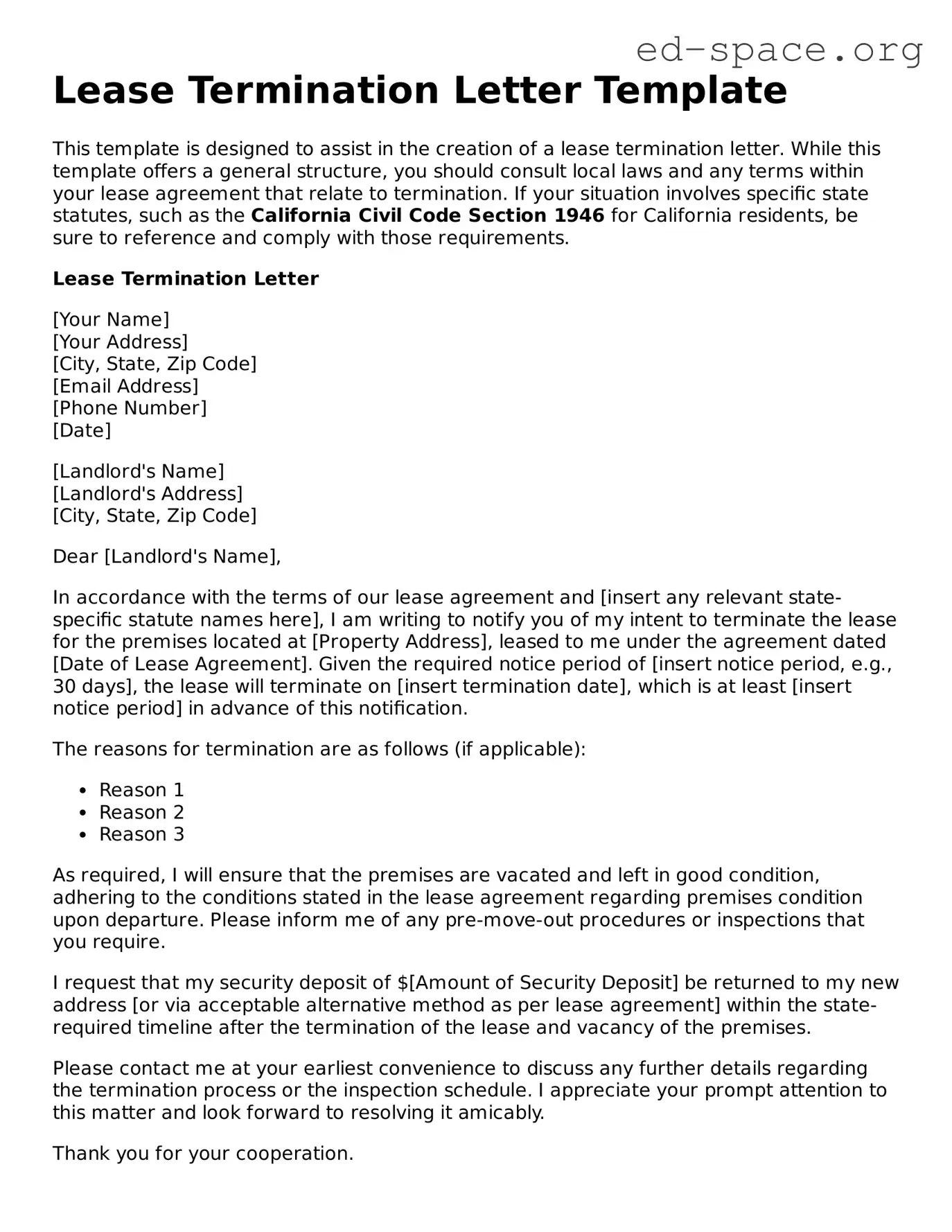Lease Termination Letter Template
This template is designed to assist in the creation of a lease termination letter. While this template offers a general structure, you should consult local laws and any terms within your lease agreement that relate to termination. If your situation involves specific state statutes, such as the California Civil Code Section 1946 for California residents, be sure to reference and comply with those requirements.
Lease Termination Letter
[Your Name]
[Your Address]
[City, State, Zip Code]
[Email Address]
[Phone Number]
[Date]
[Landlord's Name]
[Landlord's Address]
[City, State, Zip Code]
Dear [Landlord's Name],
In accordance with the terms of our lease agreement and [insert any relevant state-specific statute names here], I am writing to notify you of my intent to terminate the lease for the premises located at [Property Address], leased to me under the agreement dated [Date of Lease Agreement]. Given the required notice period of [insert notice period, e.g., 30 days], the lease will terminate on [insert termination date], which is at least [insert notice period] in advance of this notification.
The reasons for termination are as follows (if applicable):
- Reason 1
- Reason 2
- Reason 3
As required, I will ensure that the premises are vacated and left in good condition, adhering to the conditions stated in the lease agreement regarding premises condition upon departure. Please inform me of any pre-move-out procedures or inspections that you require.
I request that my security deposit of $[Amount of Security Deposit] be returned to my new address [or via acceptable alternative method as per lease agreement] within the state-required timeline after the termination of the lease and vacancy of the premises.
Please contact me at your earliest convenience to discuss any further details regarding the termination process or the inspection schedule. I appreciate your prompt attention to this matter and look forward to resolving it amicably.
Thank you for your cooperation.
Sincerely,
[Your Name]
[Your Signature, if sending by mail]
